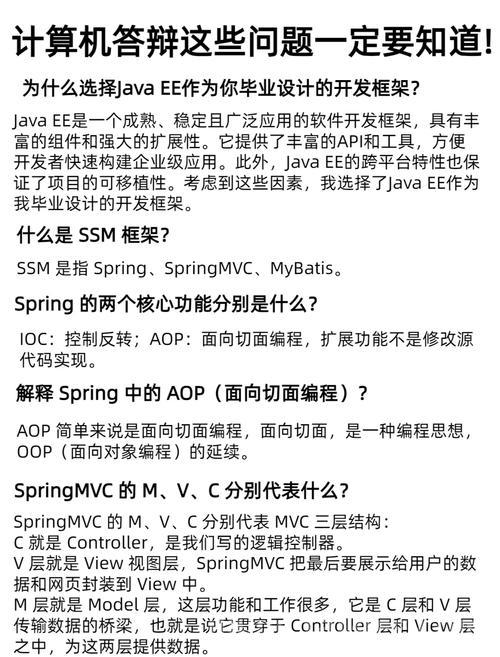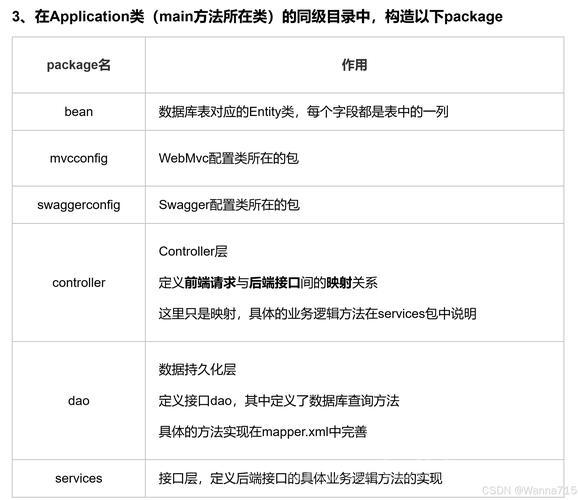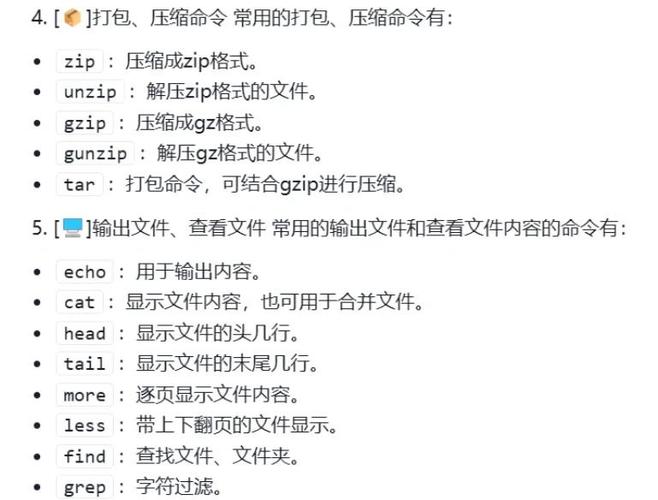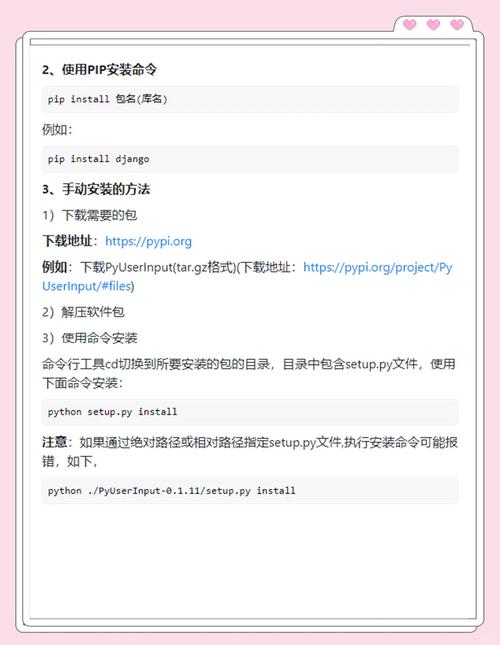spring boot RequestMapping和GetMapping的区别
@RequestMapping和@GetMapping是Spring框架中用于处理HTTP请求的注解,它们的主要区别如下:
1. 用途范围
- @RequestMapping:是一个通用注解,可用于处理所有HTTP方法(GET、POST、PUT、DELETE等)。需要通过method属性显式指定HTTP方法。
- @GetMapping:是@RequestMapping的特定版本,专门用于处理HTTP GET请求,是Spring 4.3引入的简化注解。
2. 语法差异
- @RequestMapping:需要通过method = RequestMethod.GET指定GET方法。
@RequestMapping(value = "/users", method = RequestMethod.GET) public List getUsers() { // 处理GET请求 } - @GetMapping:无需指定method属性,语义更清晰。
@GetMapping("/users") public List getUsers() { // 处理GET请求 }3. 功能等价性
- 以下两种写法完全等价:
@RequestMapping(value = "/users", method = RequestMethod.GET) // 等价于 @GetMapping("/users")4. 最佳实践
- 使用@GetMapping:当处理GET请求时,推荐使用@GetMapping,代码更简洁、语义更明确。
- 使用@RequestMapping:当需要处理多种HTTP方法(如同时处理GET和POST)时,使用@RequestMapping并配合method属性。
5. 其他HTTP方法的对应注解
- @PostMapping:处理POST请求。
- @PutMapping:处理PUT请求。
- @DeleteMapping:处理DELETE请求。
- @PatchMapping:处理PATCH请求。
这些注解都是@RequestMapping的特定形式,目的是简化代码并提高可读性。
在使用@RequestMapping和@GetMapping时,需要注意以下事项:### 一、路径映射规则
-
路径定义方式
- 支持绝对路径(如"/users")和相对路径(如"../users")。
- 推荐使用绝对路径,避免路径歧义。
@GetMapping("/api/users") // 绝对路径 @RequestMapping(value = "/api/{id}", method = RequestMethod.GET) // 带路径变量 -
路径变量与参数
- 使用{}定义路径变量,通过@PathVariable获取。
@GetMapping("/users/{id}") public User getUser(@PathVariable Long id) { ... } -
Ant风格路径匹配
- *:匹配任意数量的任意字符(不包括路径分隔符/)。
- **:匹配任意数量的任意字符,包括路径分隔符。
@GetMapping("/resources/**") // 匹配/resources/下的所有路径
- 使用{}定义路径变量,通过@PathVariable获取。
二、HTTP方法处理
-
@RequestMapping的方法限定
- 必须通过method属性指定HTTP方法,否则默认处理所有方法。
@RequestMapping(value = "/submit", method = RequestMethod.POST) // 仅处理POST
-
避免方法冲突
- 同一路径下不同HTTP方法可使用不同处理方法,但需确保路径和方法组合唯一。
@GetMapping("/users") // GET /users @PostMapping("/users") // POST /users
- 同一路径下不同HTTP方法可使用不同处理方法,但需确保路径和方法组合唯一。
- 必须通过method属性指定HTTP方法,否则默认处理所有方法。
三、请求参数与内容类型
-
请求参数处理
- 使用@RequestParam获取查询参数(如?name=John)。
@GetMapping("/search") public List search(@RequestParam String name) { ... } -
请求体与响应体
- 使用@RequestBody和@ResponseBody处理JSON/XML等格式。
@PostMapping("/users") public User createUser(@RequestBody User user) { ... } -
内容类型(Content-Type)
- 通过consumes和produces属性限定请求和响应的媒体类型。
@RequestMapping(value = "/data", consumes = "application/json", produces = "application/json")
- 通过consumes和produces属性限定请求和响应的媒体类型。
- 使用@RequestBody和@ResponseBody处理JSON/XML等格式。
- 使用@RequestParam获取查询参数(如?name=John)。
四、控制器层级注解
- 类级路径前缀
- 可在控制器类上使用@RequestMapping定义公共前缀,方法级注解在此基础上扩展。
@RequestMapping("/api") public class UserController { @GetMapping("/users") // 完整路径:/api/users public List getUsers() { ... } }
- 可在控制器类上使用@RequestMapping定义公共前缀,方法级注解在此基础上扩展。
五、错误处理与最佳实践
-
避免模糊映射
- 确保路径和方法组合唯一,否则会导致Ambiguous handler methods异常。
- 示例冲突:
@RequestMapping("/users") // 未指定方法,默认处理所有方法 @GetMapping("/users") // 冲突!与上面的路径+GET方法重复 -
路径优先级
- 精确路径 > 带变量路径 > 通配符路径。
- 例如:/users/123 优先匹配/users/{id},而非/users/**。
-
组合注解的使用
- 推荐使用@GetMapping、@PostMapping等简化注解,提高代码可读性。
六、与其他注解的配合
-
@PathVariable与@RequestParam
(图片来源网络,侵删)- 路径变量(如/users/{id})用于标识资源,查询参数(如?page=1)用于筛选。
-
@RestController vs @Controller
- @RestController = @Controller + @ResponseBody,直接返回JSON/XML。
七、版本控制
- 路径版本化
- 在路径中包含版本号(如/v1/users),避免接口升级时的兼容性问题。
@RequestMapping("/v1/users") @RequestMapping("/v2/users")
- 在路径中包含版本号(如/v1/users),避免接口升级时的兼容性问题。
八、性能考虑
- 减少通配符使用:**会增加路径匹配的复杂度,影响性能。
- 缓存路径映射:Spring会缓存路径映射关系,避免频繁解析。
总结
- 使用@GetMapping:处理GET请求,代码更简洁。
- 使用@RequestMapping:处理多种HTTP方法或需要自定义配置(如consumes)。
- 明确路径和方法:避免冲突,确保接口的唯一性和可维护性。
(图片来源网络,侵删)(图片来源网络,侵删)
-
- 以下两种写法完全等价:
- @RequestMapping:需要通过method = RequestMethod.GET指定GET方法。
免责声明:我们致力于保护作者版权,注重分享,被刊用文章因无法核实真实出处,未能及时与作者取得联系,或有版权异议的,请联系管理员,我们会立即处理! 部分文章是来自自研大数据AI进行生成,内容摘自(百度百科,百度知道,头条百科,中国民法典,刑法,牛津词典,新华词典,汉语词典,国家院校,科普平台)等数据,内容仅供学习参考,不准确地方联系删除处理! 图片声明:本站部分配图来自人工智能系统AI生成,觅知网授权图片,PxHere摄影无版权图库和百度,360,搜狗等多加搜索引擎自动关键词搜索配图,如有侵权的图片,请第一时间联系我们。











